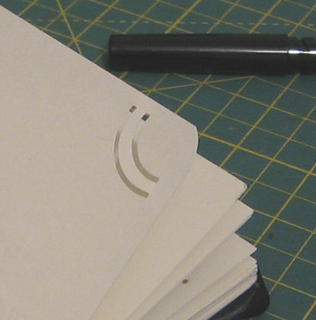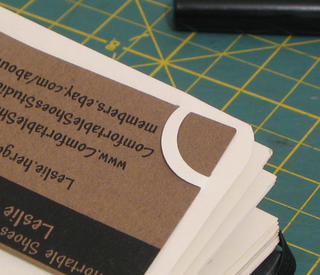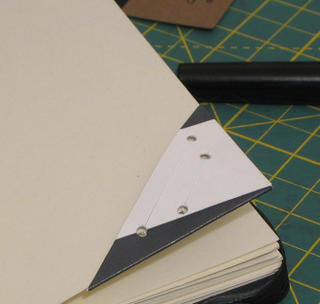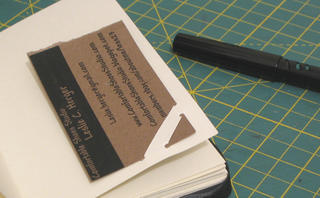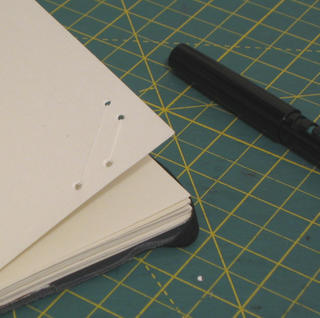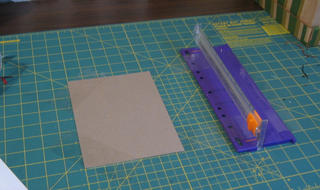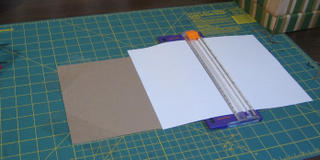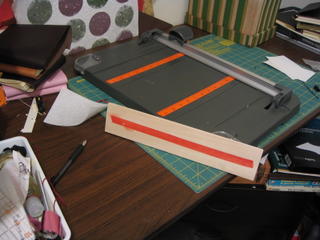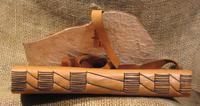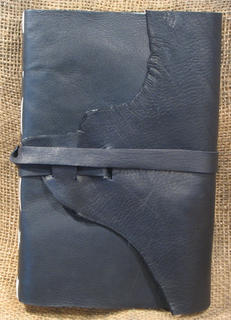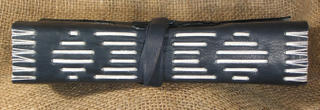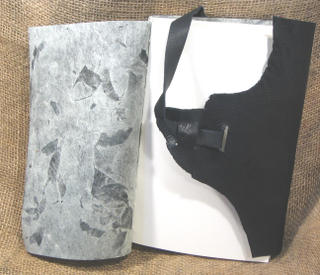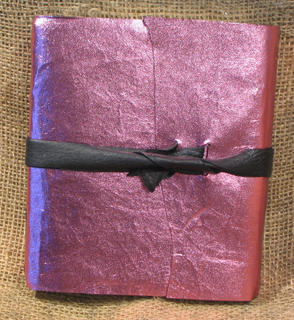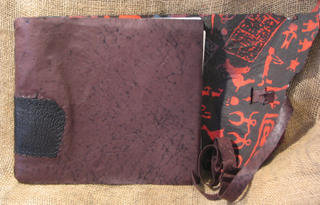In other news I’ve been sketching out a lot of designs in a hedgie I made for the purpose. I carry it with me at all times, even at the DayJob. When inspiration strikes I’ll run and take brief break and sketch out an idea. It’s also a good way to think out ideas for the books.
And example:
I’ve been working on a medieval inspired design for someone and I was going to stick with something very simple, no ornamentation, and simple long stitch sewn into stations. I liked the idea- it would be very faithful to the medieval books. BUT, medieval books often were very ornate. I want to get the simple rustic feeling in there but with a little ornament. Thinking this through and looking at images online and in books I came up with an idea. In my little book I sketched it out and then worked it out in sketches and words. My thought process became evident through 5 pages or so of sketches. I then drew up a template and cut it from kraft paper and worked it so it was exactly what I was looking for. This I traced to cardboard and then used it to cut leather. I’ve been working ideas out this way for years but I’ve always done it Joseph Cornell style on scraps of paper which I would later gather and toss into a box, eventually tossing it out (very unlike Cornell). Now I’m making an effort to either think things out in this little book or to save the scraps and paste them in. If I find odd “thought Scraps” around my studio I’m pasting them in.
Now I’ve got a whole series of little books to think in.
(I’ll scan in some pictures of my little notbooks.)


